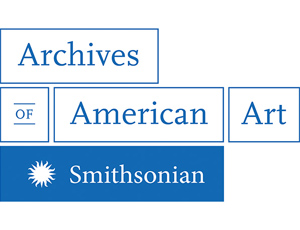New Collections: Robert Bechtle Papers and Tom Wudl Papers
Two collections of California artists are now part of the Archives of American Art
:focal(500x300:501x301)/https://tf-cmsv2-smithsonianmag-media.s3.amazonaws.com/filer_public/86/1c/861cf5f5-cdbc-4854-bad4-2544e0a8e386/aaa_bechrobe_70710_sv.jpg)
The Robert Bechtle Papers document the long and productive career of this significant San Francisco-based painter and printmaker (1932–2020). They include materials related to his early life, such as Alameda High School grade reports, early family photographs, US Army papers, and student work from his BFA and MFA studies at the California College of Arts and Crafts in Oakland.
Researchers will discover myriad examples of Bechtle’s graphic design work, much of which was commissioned by industrial clients. Several scrapbooks, assembled by Bechtle’s mother, include clippings and award announcements for the many local shows in which he exhibited throughout the 1950s.The collection includes a group of sketchbooks from Bechtle’s 1961–62 European trip with his fellow artist Nancy Dalton, whom he married the following year. At times dramatic and vibrant, rendered with pastels and colored pencil, and at times brooding and monochromatic, jotted in silverly graphite or inky black pen, the drawings chart the artist’s Grand Tour.
/https://tf-cmsv2-smithsonianmag-media.s3.amazonaws.com/filer_public/52/c2/52c2c667-3120-4cf9-ac26-2e6ab20522d3/simms_fig_1_for_blog_sv.jpg)
A devoted educator, after short stints at UC Berkeley and UC Davis, Bechtle joined the art department of San Francisco State University in 1968, where he taught until his retirement in 1999. His papers include documents related to his tenure and promotion, and a large group of demonstration drawings that he used to teach students the elements of color, line, and space.
/https://tf-cmsv2-smithsonianmag-media.s3.amazonaws.com/filer_public/1c/fa/1cfa9251-8595-4ba9-b2c0-b25223e3b36a/simms_fig_3_for_blog_sv.jpg)
The papers of Tom Wudl (b. 1948) document his parents’ life in Vienna before the Anschluss, at which point, as Jews, they were forced to flee, eventually settling in Cochabamba, Bolivia, where Wudl was born. Work permits reveal the family’s Bolivian addresses until, in 1958, they immigrated to the US, winding up in Los Angeles.
Wudl’s papers boast a large group of sketchbooks and notebooks, some of which date from his student years at the Chouinard Art Institute in the late 1960s, and include sketches for abstract compositions, pop-oriented collages, self-portraits, and meticulous renderings of keys, botanical details, and other observed things.
Later sketchbooks, from the 1980s, reveal drawings made from postcards of Los Angeles skyscrapers, which relate to a group of ambitious canvases depicting aerial views of imaginary cities. Other studies in the papers are oriented toward brainstorming for conceptual projects, such as a group on the theme of Herman Melville’s Moby Dick. Another group depicts microscopic constellations and other celestial phenomena. A marginal note imagines the final product, “a large galactic motive painted over the initial black—into which are painted various nebulae and heavenly bodies over which all the other images will be layered.”
Clippings, announcements, and rare catalogues document Wudl’s earliest exhibitions in Los Angeles, including shows at Mizuno Gallery and Margo Leavin Gallery. Wudl’s subsequent association with Paula Cooper Gallery, in New York, in the later 1970s, is also amply recorded in the papers, in the form of gallery correspondence and letters from Jennifer Bartlett, a fellow Paula Cooper exhibiter. Researchers will discover a wealth of correspondence, including postcards, notes, and letters from friends such as Richard Diebenkorn, Robert Irwin, Masami Teraoka, and Josine Ianco-Starrels. Several postcards from Vija Celmins document the close relationship between the two artists. Finally, Wudl’s long engagement with Buddhism is legible in his many reflections on the topic in his collected journals and the publicity materials and correspondence related to his 2020 exhibition The Flowerbank World, which presented complex paintings with three-dimensional elements related to the Avatamsaka Sutra (Flower Ornament Scripture).
/https://tf-cmsv2-smithsonianmag-media.s3.amazonaws.com/filer_public/d4/8c/d48c09a3-3725-4ce6-9f69-32d19780444c/simms_fig_2_for_blog_sv.jpg)
These two collections deepen the Archives’ representation of postwar California artists. They highlight Bechtle and Wudl’s gravitation toward figurative rendering as a way to comment on their cultural and geographical contexts—commentary that took the form of Bechtle’s deadpan directness and Wudl’s lyrical and spiritual fantasies. They also document the influential relationships both artists developed by exhibiting in New York, all while remaining closely tied to the West Coast.
This text originally appeared in the Fall 2022 issue (vol. 61, no. 2) of the Archives of American Art Journal.
